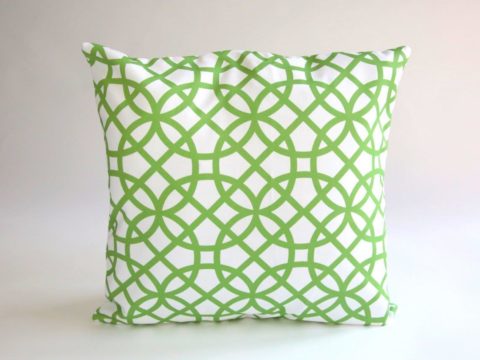Scottish Peers
Chapter 3 : Earls (Abercorn - Atholl)
Alphabetical by English spelling
There were two distinct types of Earldoms – those which originated from the Mormaers of the ancient kingdoms that made up Scotland north of the Firth of Forth, and those granted by Kings, although by the late fifteenth century the term Earl was used for both. The old mormaerdoms were ‘comital’ that is, they relate to specific geographic territories and were not just titles. Later earldoms might be comital, or just titular. The earldoms below are only those which were created prior to 1625.
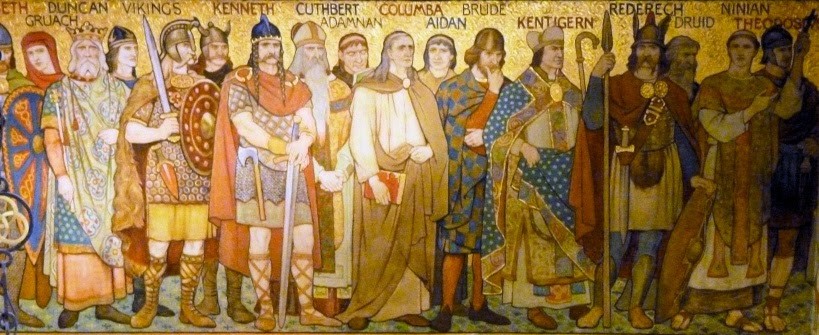
Abercorn
In 1606, James Hamilton was granted the title of Earl of Abercorn. Hamilton was the grandson of James Hamilton, Duke of Chatelherault (see the earls of Aaron) and the son of Lord Claud Hamilton. Lord Claud had helped Queen Mary following her escape from Lochleven and had fought for her at the Battle of Langside. He was among the Hamiltons who conspired, first, to have the Regent Moray assassinated in 1570, and then the Earl of Lennox. The earldom was promoted to a Marquissate in 1790 and is now a dukedom, held by the 5th Duke, James Hamilton.
Angus
The ancient mormaerdom passed to the Norman Umfravilles from Mary (or Matilda) of Angus, who was the last Gaelic Ban-mormaer (female mormaer). It was forfeited in the early fourteenth century. A new earldom, which retained the ancient comital lands, was created by Robert II (r. 1371 – 1390) for his second cousin, Sir John Stewart of Bonkyll. This descended to Earl John’s grand-daughter, Lady Margaret Stewart, whose illegitimate son, George Douglas, was permitted to inherit.
George Douglas, Earl of Angus, was the ancestor of the ‘ Red Douglases', whilst his half-brother, the Earl of Douglas, gave rise to the ‘ Black Douglases'. George married Mary of Scotland, daughter of Robert III. The earldom descended eventually to Archibald Douglas, 6 th Earl, who married Margaret Tudor, widow of James IV. Their daughter, Lady Margaret Douglas, was the mother of Henry, Lord Darnley, and thus grandmother of James VI and I. Lady Margaret claimed the earldom when her father died in 1557, but he had entailed it on his male heirs. She gave up the fight for it, in exchange for the rival heir’s agreement to the marriage of her son, Lord Darnley, to Mary, Queen of Scots. The Earldom devolved on the 6th Earl’s nephew, David, and merged with the Dukedom of Hamilton in 1761.
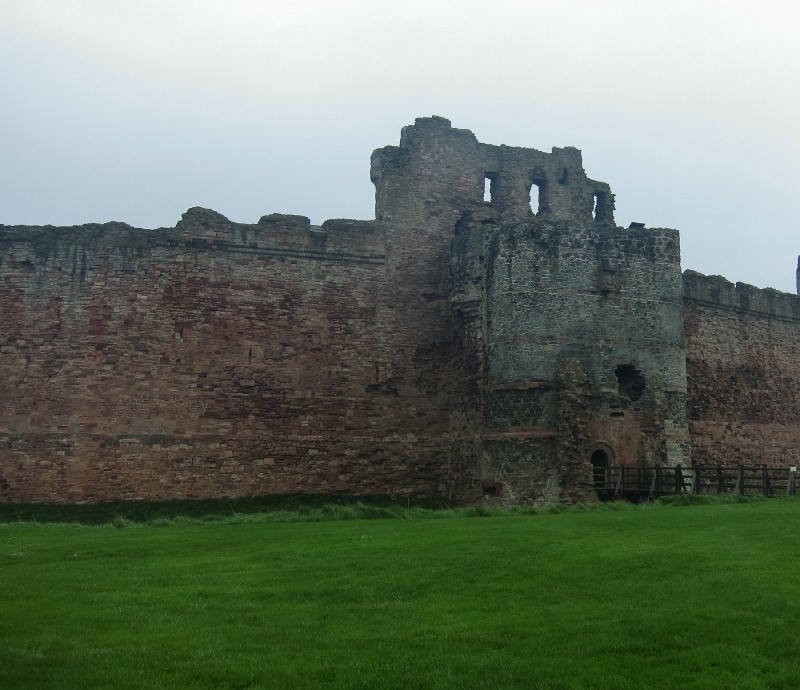
Argyll
The 1st Earl of Argyll was Sir Colin Campbell. He was
granted the title in 1457 by James II, in return for support against the ‘
Black’ Douglases'. Under James III, he was Lord Chancellor of Scotland but supported
the rebels who overthrew James at the
Battle of Sauchieburn in 1488. The 2nd Earl of Argyll was in feud with the Lords of the Isles, and the various
disputes between the clans formed part of the background of
James IV’s decision
to impose royal authority in a campaign known as the '
Daunting of the Isles'. The 2nd Earl was killed at Flodden. The 3rd Earl served James V in
the borders as Lord Warden of the Marches.
Under James V, the 4th Earl was again embroiled in quarrels with the other leaders of the western and southern islands of Scotland. Following enquiry into his management of his lieutenancy, he spent a short period in prison. After the death of James V, Argyll, along with a number of the other Lords disputed the appointment of James Hamilton, Earl of Arran (Argyll’s brother-in-law) as Regent. They were particularly concerned at Arran’s plans to marry the young Queen Mary to Edward, Prince of Wales, son of Henry VIII of England. Among Argyll’s colleagues at this time was Matthew Stuart, 4th Earl of Lennox, however when Lennox changed sides to support the English party, Lennox attacked Argyll as part of Henry VIII's strategy to control Scotland. Lennox was unsuccessful and Argyll increased his influence in the region. Argyll commanded the right-wing at the Battle of Pinkie, a heavy defeat for Scottish forces. Argyll was an early convert to Protestantism in Scotland, but died before the Wars of the Congregation began.
The 5th Earl, also a committed Protestant, was a close associate of Lord James Stewart, later Earl of Moray. He was one of the Lords of the Congregation, who deprived Marie of Guise of her role of Regent and requested English intervention in 1560 to secure the Protestant Reformation in Scotland. Argyll was an opponent of Mary, Queen of Scots’ marriage to Lord Darnley and was one of the rebels the Queen pursued in the Chaseabout Raid, together with Moray. Unlike the others involved, he was not exiled, probably owing to the strength of his control of the Highlands. He was certainly involved in the murder of David Riccio and probably that of Darnley as well.
Although he fought with the Lords at Carberry Hill, he did not wish to go as far as deposing Mary, and became one of the leaders of the Queen’s party, although he did not cover himself in glory at the Battle of Langside, which the Queen lost.
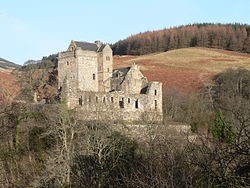
Argyll later joined the government of Lennox in which he became a Privy Councillor and later Lord Chancellor. Argyll was married to Lady Jean Stewart, the illegitimate daughter of James V and thus half-sister to both Mary, Queen of Scots, and Moray. He had no sons and was succeeded by his half-brother, Sir Colin Campbell. The 6th Earl was also Lord Chancellor and was succeeded by his son the 7 th Earl who was one of the Protestant leaders against the Catholic insurrection of 1594. Ironically, the 7 th Earl converted to Catholicism in 1618 and ceded his estates to his son who became the 8 th Earl.
The 8th Earl was a leading Covenanter during the Wars of the Three Kingdoms (the term used for the complex civil wars between England, Scotland and Ireland usually referred to in England as the Civil War). The current holder of the title, which was elevated to a dukedom in 1701, is Torquhil, 13 th Duke of Argyll.
Arran
The earldom of Arran was created by James III for Thomas, Lord Boyd in 1467. James probably had little choice in the matter, as Thomas was the son of Robert, 1st Lord Boyd, who was Regent during James’ minority. Thomas was also married to James’ sister, Princess Mary. Two years later, James took power himself and the Boyds were forfeited, with Thomas dying in the early 1470s, probably in the Low Countries.The widowed Princess married a second time in 1474 to James, 6th Lord Hamilton, a man some forty years her senior. Mary and Lord Hamilton had three children – James, Elizabeth and Robert. Elizabeth married Matthew Stewart, 2nd Earl of Lennox.The oldest son, James, 7th Lord Hamilton, was granted the Earldom of Arran in 1503, as recognition for his part in negotiating the Treaty of Perpetual Peace with England. His matrimonial career created a feud between his sons and those of his sister for generations.
In 1490, he married Elizabeth Home, widow, or so it was thought, of Sir Thomas Hay. In 1506, their marriage was dissolved when the Earl of Arran, as James now was, claimed that Thomas Hay had not died until after the marriage of 1490 between himself and Elizabeth. Arran then married Janet Bethune (Beaton), by whom he had several children, including James Hamilton, 2 nd Earl. It was later claimed that Arran continued to cohabit with Elizabeth, and therefore the legitimacy of his second marriage was questioned (although the annulment was repeated in 1510). Because of this, the Lennox Stewarts maintained that the 2 nd Earl was illegitimate and not the next heir to Mary, Queen of Scots in the 1540s. The 2nd Earl’s legitimacy was accepted by the majority of people, and, in 1542, when James V died, he was confirmed as Regent by the Scottish Estates.
Initially, Regent Arran pursued a pro-English policy, agreeing the Treaty of Greenwich, under which the baby Queen would be married to Edward, Prince of Wales. He also appeared to be willing to convert to Protestantism, but he did not hold a consistent position on either of these points, or, in fact, on anything, being described as changeable, weak and vacillating. When it became apparent that the Treaty of Greenwich would not be ratified, Arran moved to a pro-French stance, immediately provoking the Earl of Lennox to become pro-English. Arran was won over to the marriage of Queen Mary to the Dauphin Francois by the grant of the Dukedom of Chatelherault by Henri II in 1543.
In 1554, Chatelherault resigned the Regency to Marie of Guise, in return for confirmation of his position as Mary’s heir. He initially supported Marie during the Wars of the Congregation, but then changed sides in August 1559. His eldest son, another James, was a far more convinced Protestant, and a strong supporter of the Lords of the Congregation.
Arran hoped to marry James, to either Mary, Queen of Scots, or, preferably, Elizabeth I of England, or even Lady Katherine Grey, who was an alternate heir to the English throne. Neither Queen had the slightest interest in Hamilton – fortunately, as he had inherited mental instability from his mother and was confined from 1562 until his death in 1609. When Mary married Lord Darnley, the son of the Earl of Lennox, Chatelherault was deeply disgruntled, but took no action against her. Following her deposition, he and his sons initially supported the Regent Moray, until they began to suspect that Moray had designs on the Crown himself, which would displace them from the succession. Chatelherault was imprisoned until he accepted James VI as King in 1573.
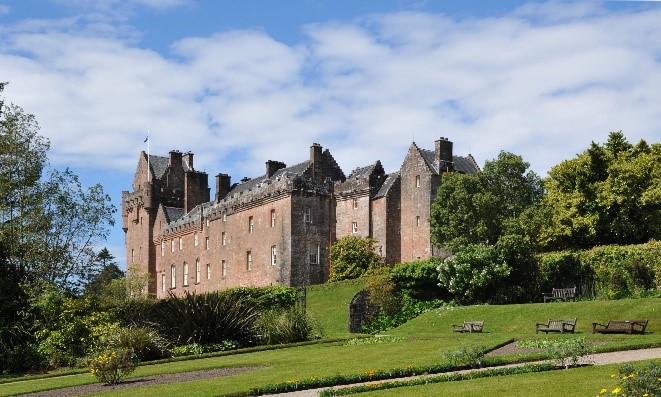
Following the restraint of his brother James, one of Chatelherault’s younger sons, Lord John Hamilton, took over management of the family estates following Chatelherault’s death in 1575. An adherent of the Queen’s Party, he was forfeited by the Regent Morton in 1579 and exiled, first to England, then France. In 1585, following an insurrection led by Hamilton and others, he was received into favour by James VI, to whom he became a Privy Councillor. He was granted the Marquisate of Arran in 1599. He predeceased his brother, James, but both the Earldom and Marquisate passed to John’s son, James, 2 nd Marquess.
The 2nd Marquess acted as Lord High Commissioner for James VI – ie, representing the King in the Scottish Parliament when he was absent in England. His son was promoted to a Dukedom. The present Duke is Alexander Douglas-Hamilton, 16 th Duke, who is descended from the 1st Duke’s brother.
Atholl
The mormaerdom passed through two women, Forbhlaith, who married the Norman David de Hastings, and her daughter, Ada de Hastings. Ada married David de Strathbogie, a descendant of the Mormaers of Fife. Ada’s grandson was forfeited for rebellion against Robert the Bruce. The earldom was recreated for the sons of Robert II by his second wife but forfeited by Walter, Earl of Atholl and Strathearn, following the assassination of James I. The title was recreated in 1457 for Sir John Stewart of Balveny, who was the son of Joan Beaufort, Dowager Queen of Scots by her second marriage. The 2nd Earl was one of the few noble survivors of Flodden and the 3rd Earl was a trusted councillor of James V.
The 4th Earl of Atholl, although a Catholic who had voted against the Scottish Reformation, joined the Lords who deposed Mary, Queen of Scots. He then recovered his allegiance and became a member of the ‘Queen’s Party’ that sought to restore her. He became Chancellor under James VI. On the death of the 5th Earl in 1595, the title became extinct, later being recreated for the descendants of the 1st Earl’s daughter and raised to a Dukedom, currently held by Bruce Murray, 12th Duke and Clan Chief of Murray.
